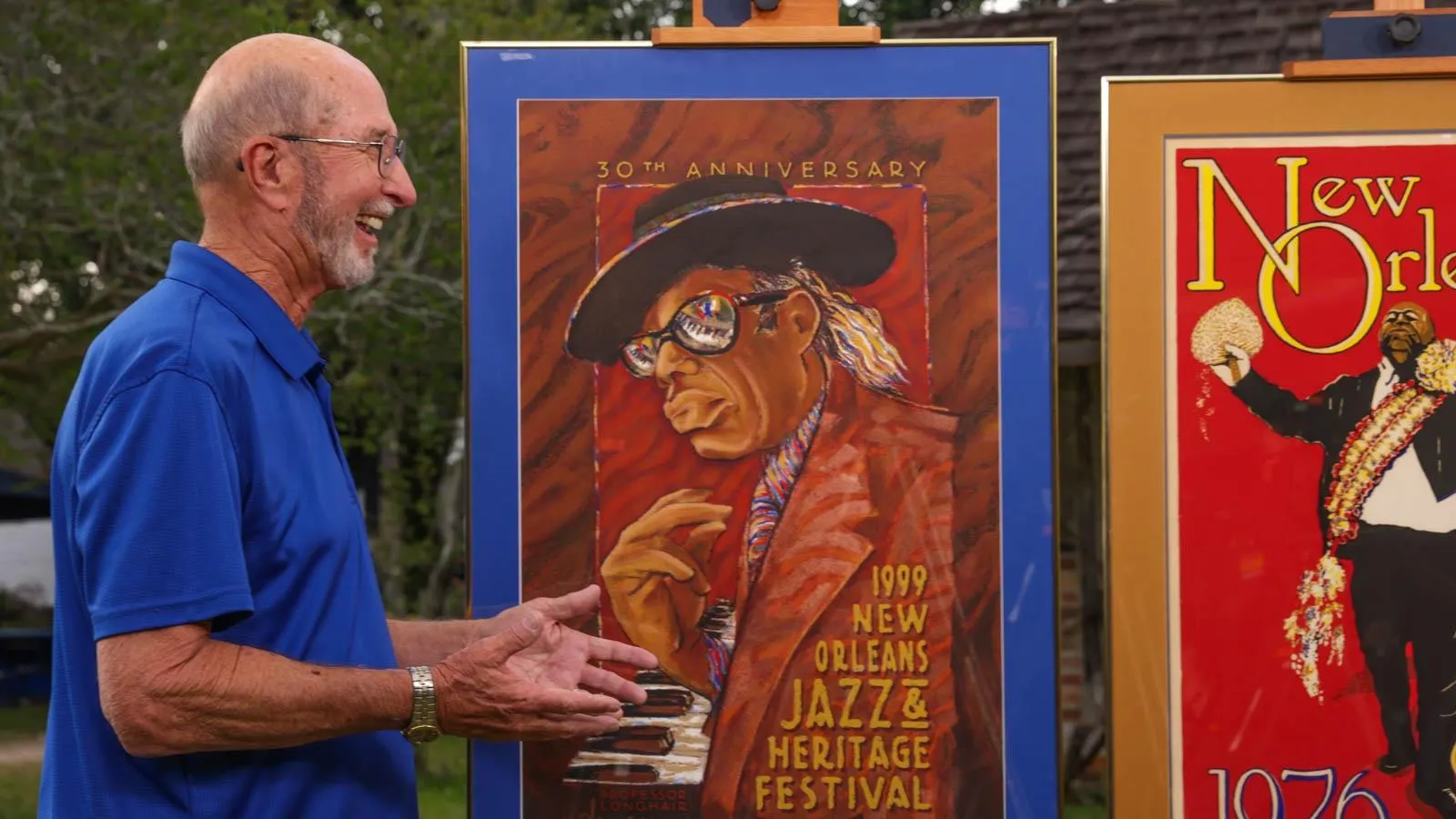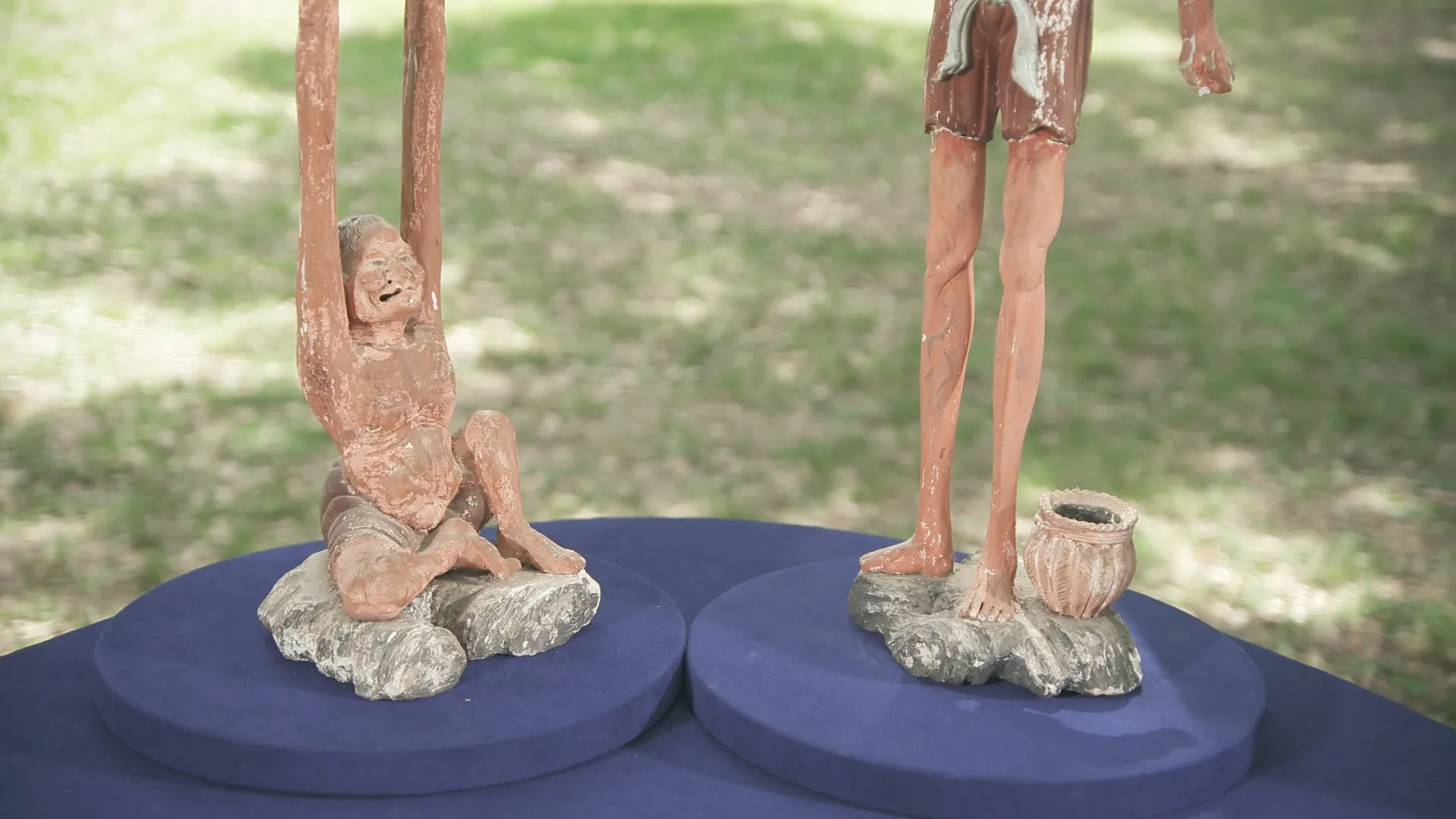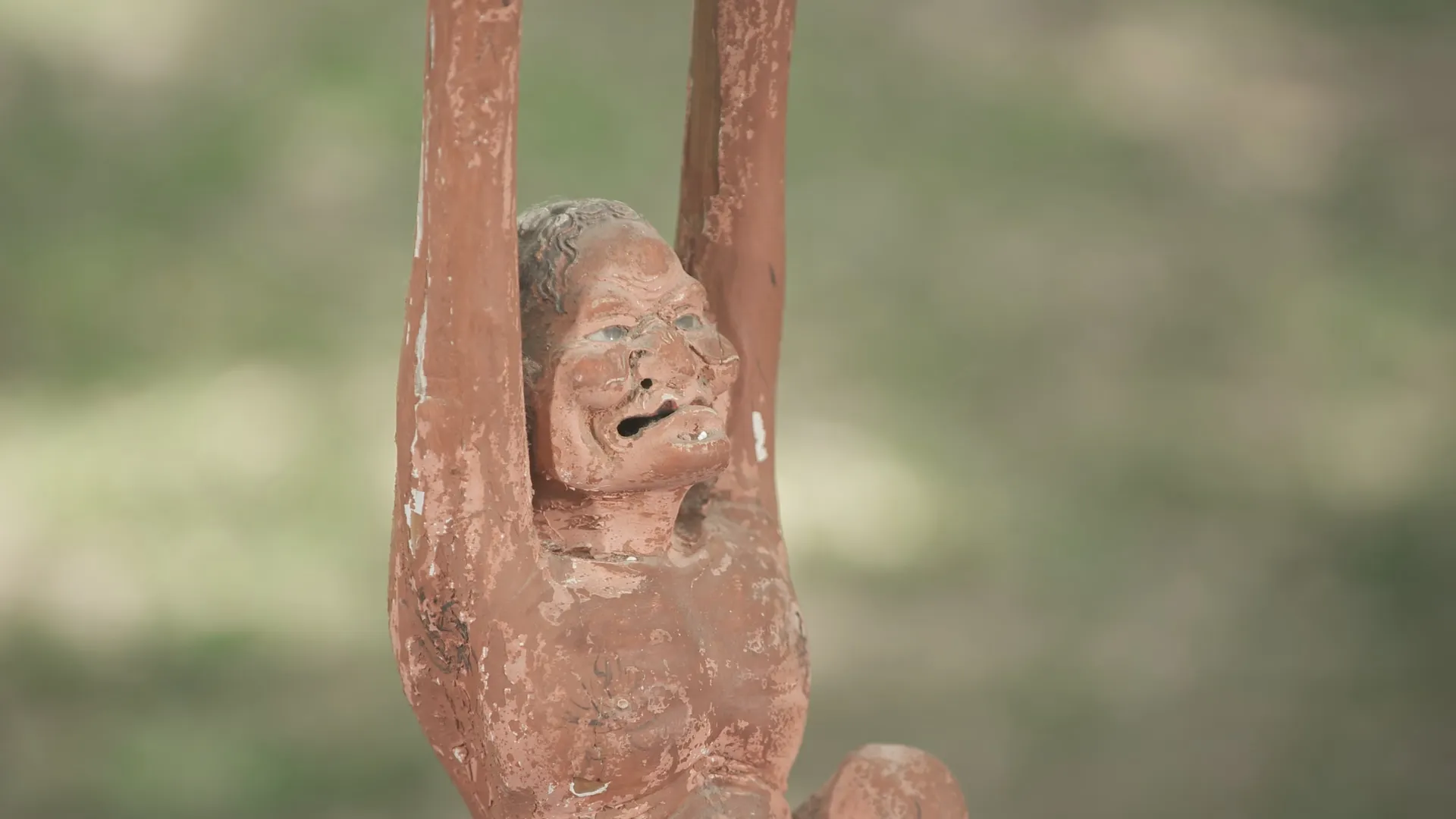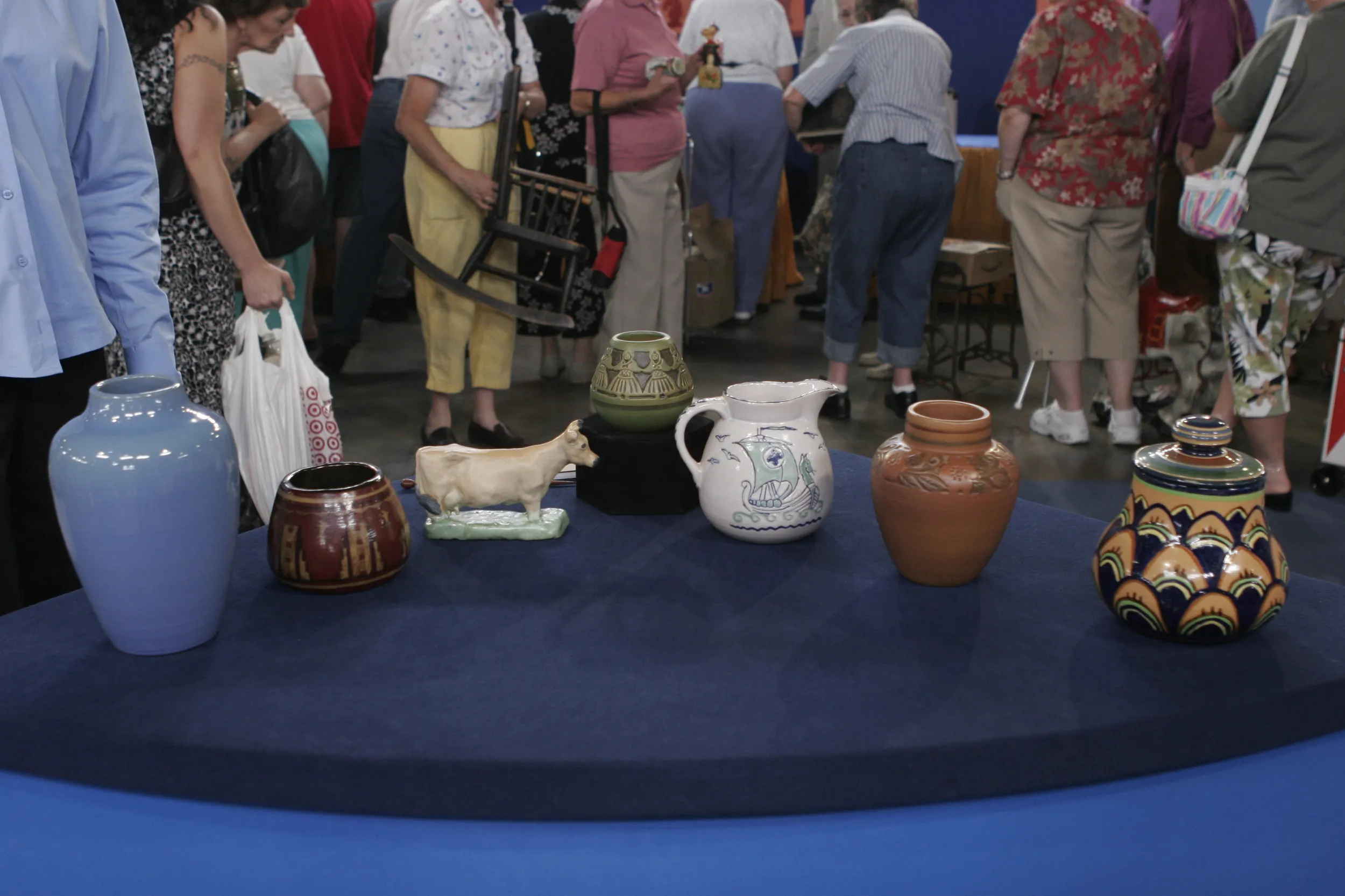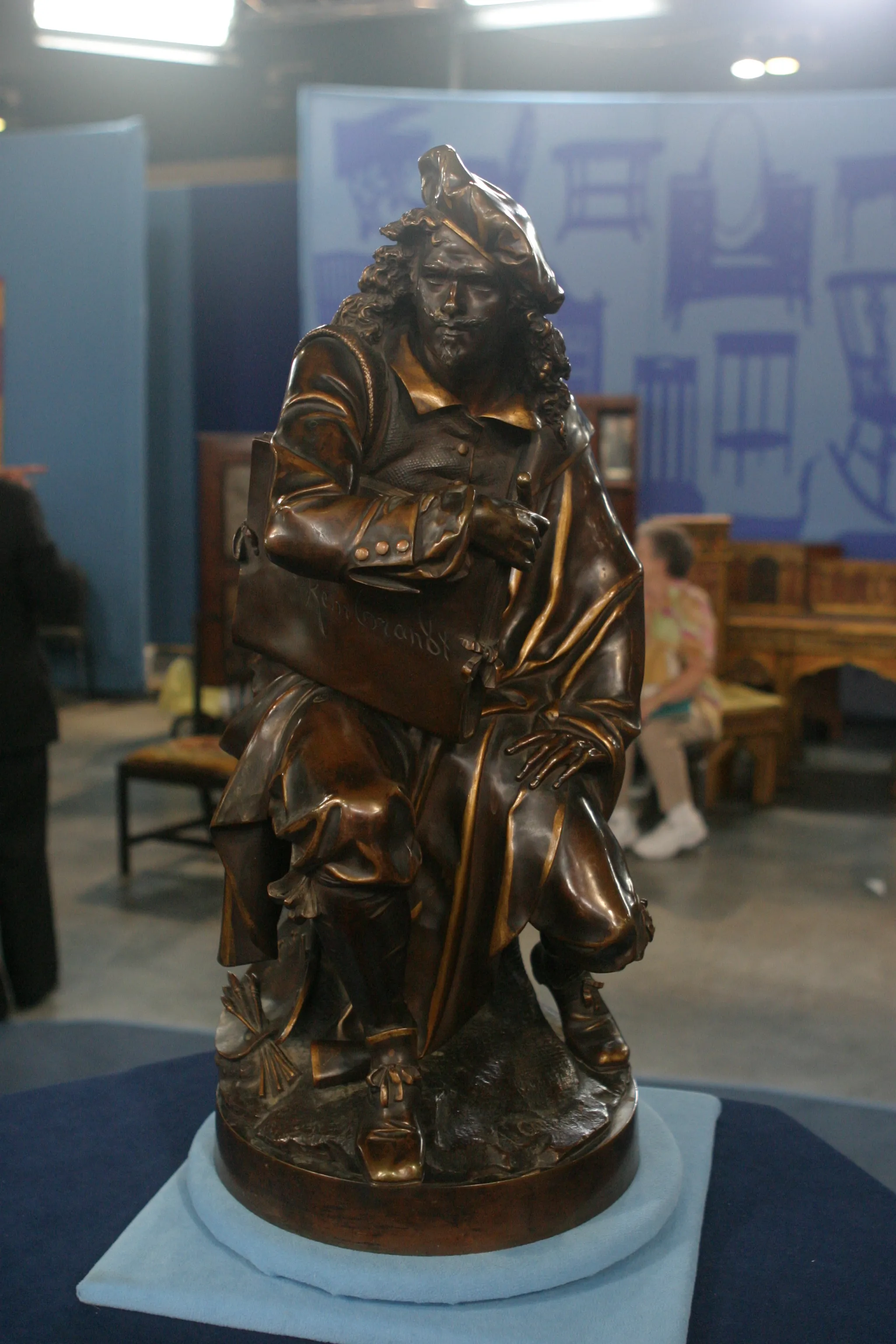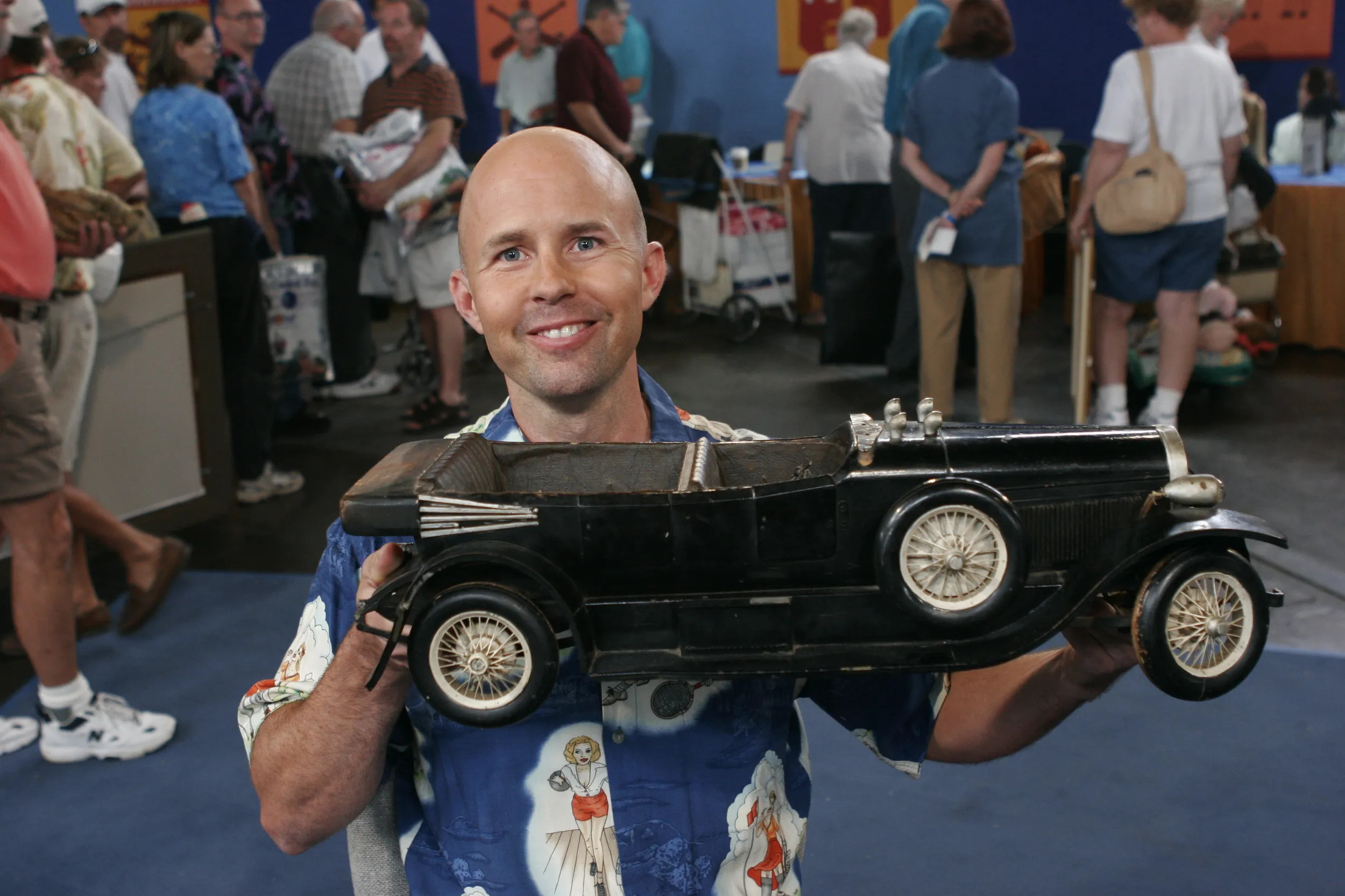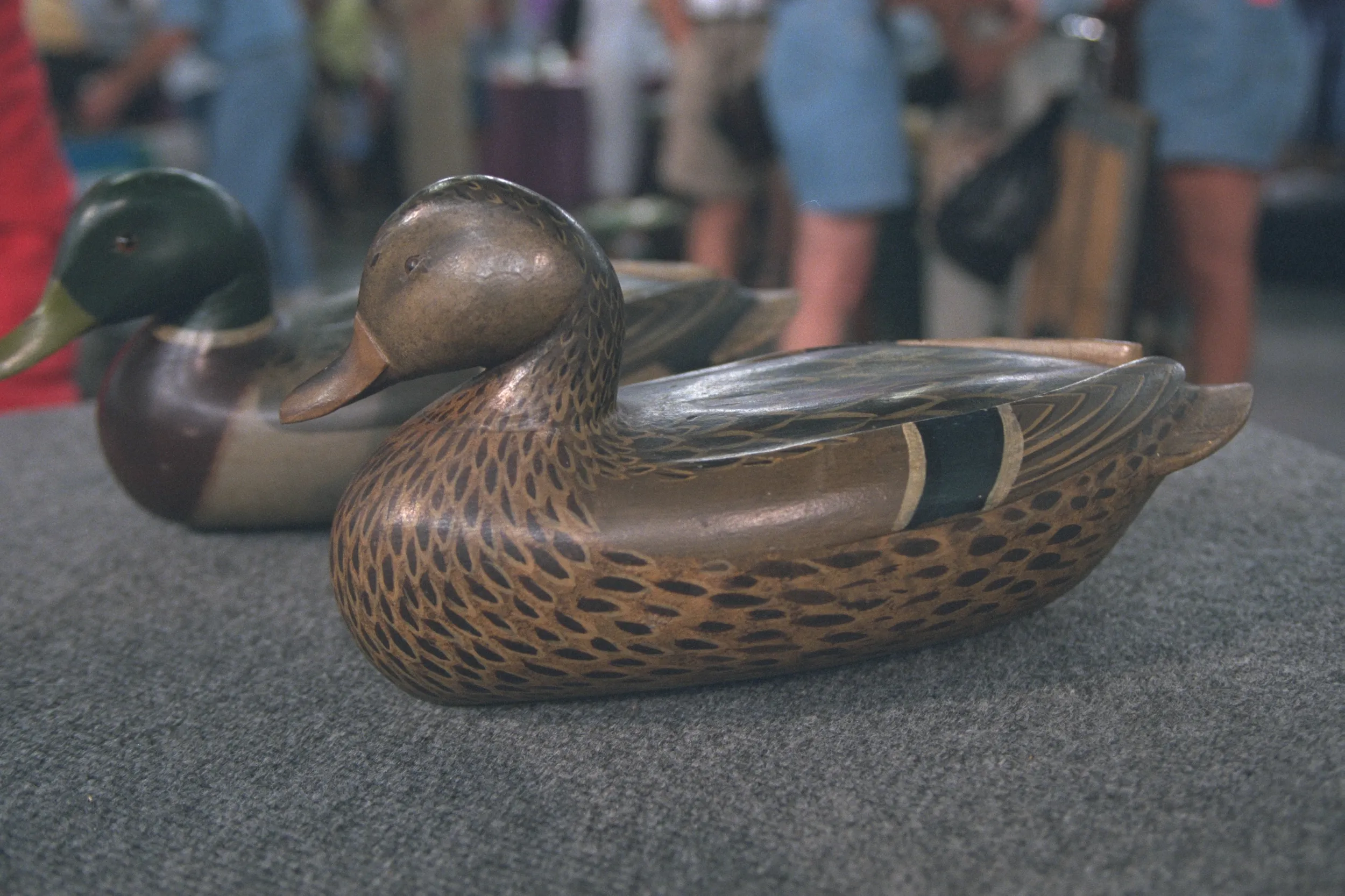GUEST: They have been on the mantel in the house that I live in now for 73 years. I inherited my home from my cousin, and these guys were there. As a child, a little child, I, I always was curious and would ask my cousin, "What are those?" And he said, "Oh, they're ashtrays." I did look up the story...
APPRAISER: Mm-hmm.
GUEST: ...about the two tribes that aided each other, because the one with the short arms and the long legs couldn't reach the fish; and the one with the long arms and the short legs, and he's the seated one, couldn't reach the fish. But together, when they joined forces, they could reach the fish, so they fed the village.
APPRAISER: So, you don't know whether a family member bought them...
GUEST: Right, right.
APPRAISER: ...or where they might have acquired them?
GUEST: Well, my cousin did serve in Japan, in, uh, Guadalcanal, and he was in the Marines, so they could have come from there, but I, I really don't know.
APPRAISER: You're in the right part of, of the universe.
GUEST: (laughing) Okay.
APPRAISER: These are Japanese.
GUEST: Okay.
APPRAISER: And there's actually figures of supernatural beings...
GUEST: Oh, okay.
APPRAISER: ...called yokai in Japanese.
GUEST: Okay.
APPRAISER: This is, you know, a group of figures which are monsters and special beings and have special powers. And they're really folk figures, and they're sculptures. They really had no practical purpose. They were perhaps made as a form of entertainment to the viewer. They have great character. The one with long legs is called Ashinaga,
GUEST: o... Ashinaga, okay.
APPRAISER: Right. 'Cause ashi means legs, and naga means long.
GUEST: Oh, wow.
APPRAISER: Okay? And this one over near you is called Tenaga, which means, actually, long hands, but it's really long arms.
GUEST: Arms.
APPRAISER: And these are supernatural beings who did work together to fish. So, Ashinaga would walk...
GUEST: I got that right.
APPRAISER: (laughs) Right, would walk into the sea with Tenaga on his shoulders. And so they could go way into the sea, and then Tenaga would grab the fish and put them in Ashinaga's basket.
GUEST: Ah.
APPRAISER: So these are made of colored gesso over wood, and they do have glass eyes inlaid, and they have very ferocious expressions.
GUEST: I wouldn't let them clean the dust out of the faces. (laughs)
APPRAISER: These could be abalone shells. Not ashtrays.
GUEST: Huh. (laughing)
APPRAISER: Abalone shells. They have been restored, here and, you know, in various places throughout.
GUEST: Mm-hmm. Well, my cat knocked him off the fireplace years ago. (both laugh)
APPRAISER: I see. They're probably made betw, around 1880, 1890, or 1900.
GUEST: Okay.
APPRAISER: What do you think they're worth?
GUEST: I have no idea. To me, they're worth everything, 'cause they're part of my life. A couple hundred dollars? I have no clue.
APPRAISER: Well, I would say, other than a couple hundred dollars, more like a couple thousand dollars.
GUEST: Wow! (laughs)
APPRAISER: I would say, at auction, for the pair, about $2,500 to $4,000.
GUEST: Wow!
APPRAISER: $2,500 to $4,000.
GUEST: Wow!
APPRAISER: Now, if, in fact, they were in a little better condition, probably they would carry a presale estimate of $5,000 to $7,000.
GUEST: Wow. They're not going to auction. They're going back to their spots on the mantel. (laughing)

